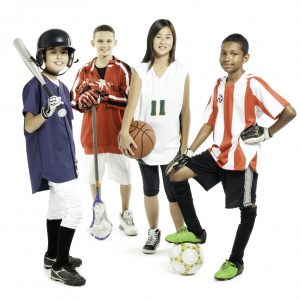Baby-Led Weaning A Developmental Perspective
Baby-led weaning. Every parent has experienced the scenario. Seated comfortably at dinner with their six-month old baby in his high chair, a mother and father look over to see the face of an infant who wants nothing to do with his puréed carrots. He wants only one thing: their grilled chicken and steamed green beans. So, what’s a parent to do? The infant is at an age when pediatricians say that parents can start to offer smooth, blended (puréed) foods as a way to introduce different flavors. Yet some parents feel that, if their infant shows interest in solid foods, he or she must be ready for those foods.

Does your baby show interest in a new food?
Baby-led weaning (BLW) is an infant-driven feeding approach in which the parent offers the infant any food in which he or she shows interest. This could include, but is certainly not limited to, raw apples, french fries, potato chips, fish sticks, pieces of grilled chicken, and carrot sticks. Many parents report success with BLW, though studies have demonstrated an increased risk of choking using this approach. But why?
Each parent has to decide what works best for their child. (Parenting seems to be an endless series of decisions, does it not?) As with all decisions in parenting – bottle vs. breast, pacifier vs. no pacifier, co-sleeping vs. separate crib, Baby- Led Weaning vs. progressive textures – it’s important to have the facts. Once we have the facts, we as parents can make educated decisions about what’s best for our family and our little ones.
When deciding if BLW is right for your infant, there are many points about normal development that are important to consider. A large number of developmental factors play a role in an infant’s feeding progression. These include: vision (the infant’s ability to see the food), sensory input (the infant’s ability to distinguish different colors, tastes, smells, and textures of various foods), trunk control (the infant’s ability to sit up and support himself, promoting a safe, upright position for eating solid foods), and fine motor skills (the infant’s ability to hold a piece of food in his hand and bring it to his mouth).
While all of these are important, some of the most critical developmental milestones to be aware of when considering BLW are those associated with the progression of oral motor functions. In order to safely chew and swallow foods, a person’s oral motor skills must be refined about to be able to 1) keep the food in his mouth, 2) move the food forward and backward, as well as side to side using his tongue, 3) chew the foods in a rotary pattern (this is a circular chewing pattern, like a cow chewing cud, not just munching or smashing the foods against the roof of the mouth), and 4) be able to purposely move the food backward in the mouth using the tongue.
Below are the milestones related to oral motor development that are important for readiness for solid foods (not just liquids or purées):
- 0-4 months: During this time, infants continue to develop reflexes that protect their airway and prevent choking. They are able to coordinate two to three sucks from a nipple or bottle prior to swallowing, and respond with consistency to stimulation provided around the mouth (for example, a pacifier or toys).
- 4-6 months: Infants continue to develop the ability to move liquid and watery purees backward in the mouth with their tongues, though these textures continue to move backward primarily through pressure within the mouth when the lips are closed. The tongue begins to move items back and forth (but not yet from side to side, which is important for being able to effectively chew.) Around six months, a primitive “munching” pattern may begin to emerge. This marks the first step toward a rotary chewing pattern.
- 6-9 months: This is when developmentally mature movement of a bite of food from side to side in the mouth occurs. Infants are able to transition slightly more textured foods forward and backward, side to side in the mouth, and demonstrate emerging ability to chew these foods. Infants continue to move food to the back of the throat to swallow primarily via pressure within the mouth, rather than coordinated tongue movement. The primitive munch continues to be refined.
- 10-12 months: Infants develop the ability to lick food off their lips effectively. Biting becomes more isolated, which is important in development of rotary chewing. Rotary chewing begins to emerge toward the end of this timeframe, but continues to be refined from 12-24 months. By this age, infants demonstrate the ability to move foods from side to side in their mouths without difficulty.
- 14-16 months: Infants are able to chew and move firmer and more textured bites of the food throughout the mouth. By this age, they are able to reliably keep a bite of food in the mouth (hooray for no more bibs!)
All of these abilities (containment of a bite in the mouth, moving a bite forward and backward, moving a bite side to side, rotary chewing, active rather than passive movement of a bite backward to swallow) should be present for chewing and swallowing of solid foods to be considered safe.
You know your baby best. You are also in the best position to make the safest choice based on his or her abilities and whether BLW is right for your infant. If you have any questions, consult with your trusted medical provider.
Lauren Most, CCC-SLP, is a speech-language pathologist for Tx:Team partnered with Frederick Regional Health System. She received her Bachelor’s degree in speech-language pathology from Loyola University in Maryland, and her Master’s degree from the University of Maryland, College Park. Her work includes providing services to infants and toddlers in the neonatal intensive care unit and the community who have difficulty with feeding and/or swallowing.





 to “virtually” meet us! Find out who we are and the opportunities we have available for Physical Therapists in Alabama!
to “virtually” meet us! Find out who we are and the opportunities we have available for Physical Therapists in Alabama!